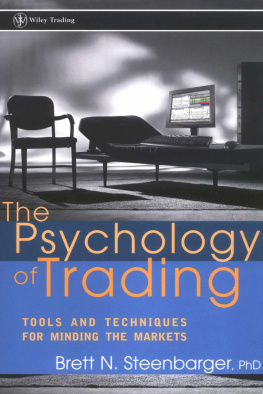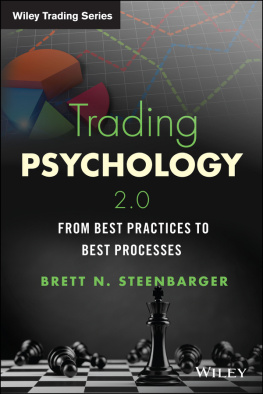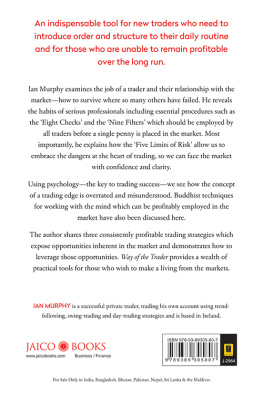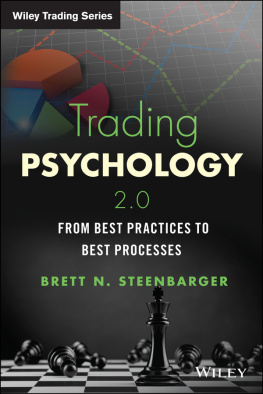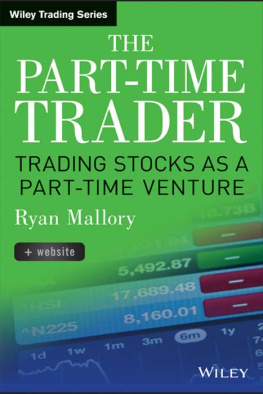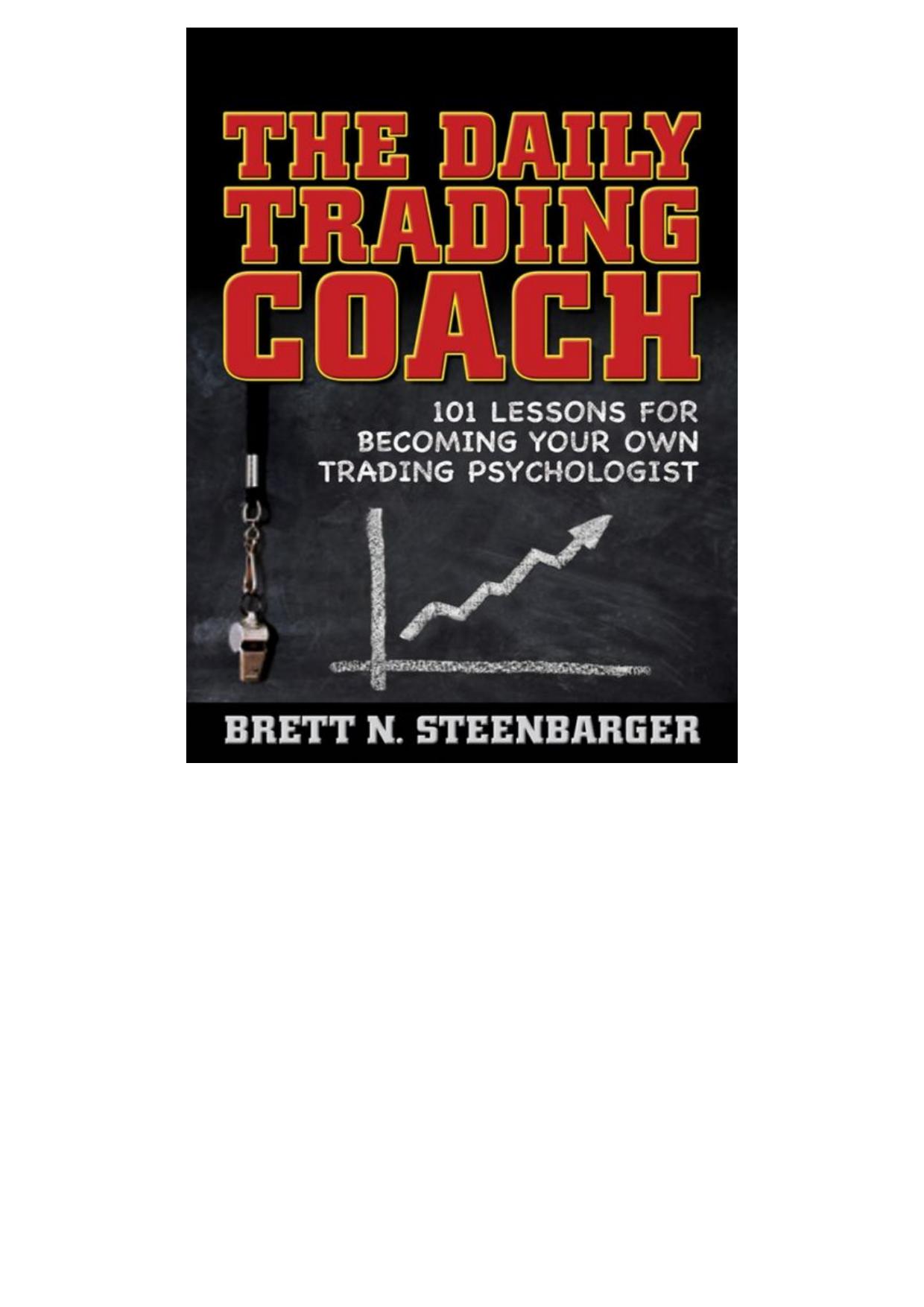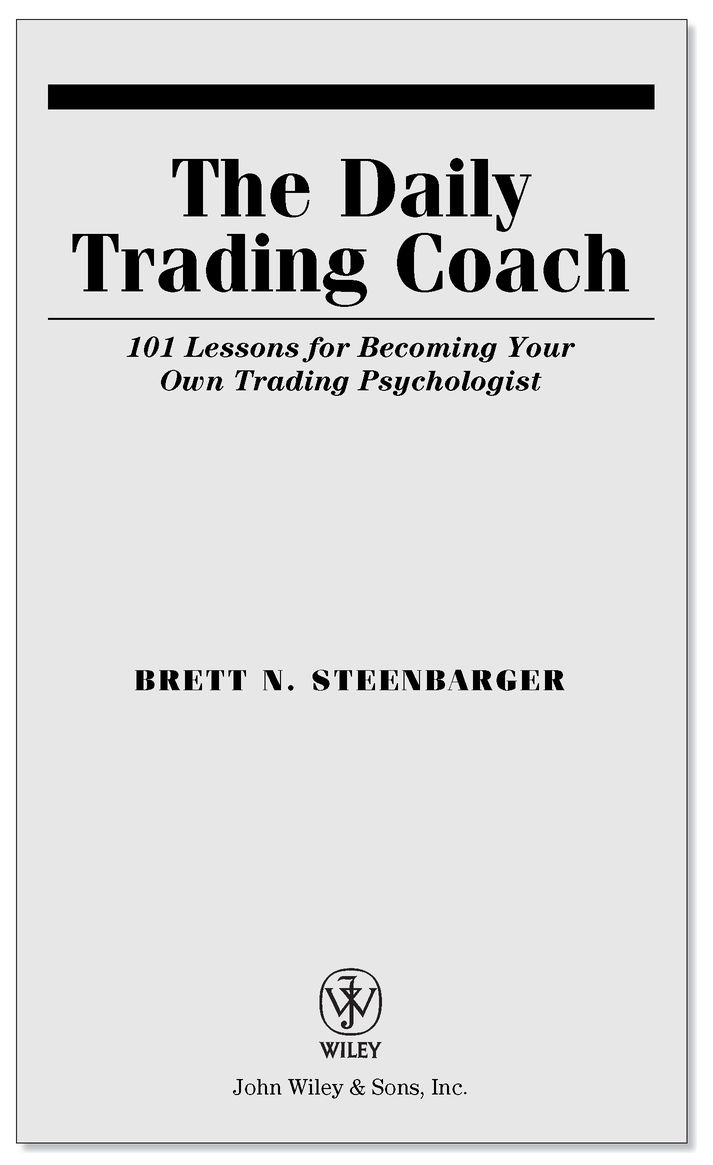Table of Contents
Founded in 1807, John Wiley & Sons is the oldest independent publishing company in the United States. With offices in North America, Europe, Australia and Asia, Wiley is globally committed to developing and marketing print and electronic products and services for our customers professional and personal knowledge and understanding.
The Wiley Trading series features books by traders who have survived the markets ever changing temperament and have prosperedsome by reinventing systems, others by getting back to basics. Whether a novice trader, professional or somewhere in-between, these books will provide the advice and strategies needed to prosper today and well into the future.
For a list of available titles, visit our Web site at www.WileyFinance.com.
Copyright 2009 by Brett N. Steenbarger. All rights reserved.
Published by John Wiley & Sons, Inc., Hoboken, New Jersey.
Published simultaneously in Canada.
No part of this publication may be reproduced, stored in a retrieval system, or transmitted in any form or by any means, electronic, mechanical, photocopying, recording, scanning, or otherwise, except as permitted under Section 107 or 108 of the 1976 United States Copyright Act, without either the prior written permission of the Publisher, or authorization through payment of the appropriate per-copy fee to the Copyright Clearance Center, Inc., 222 Rosewood Drive, Danvers, MA 01923, (978) 750-8400, fax (978) 646-8600, or on the web at www.copyright.com. Requests to the Publisher for permission should be addressed to the Permissions Department, John Wiley & Sons, Inc., 111 River Street, Hoboken, NJ 07030, (201) 748-6011, fax (201) 748-6008, or online at http://www.wiley.com/go/permissions.
Limit of Liability/Disclaimer of Warranty: While the publisher and author have used their best efforts in preparing this book, they make no representations or warranties with respect to the accuracy or completeness of the contents of this book and specifically disclaim any implied warranties of merchantability or fitness for a particular purpose. No warranty may be created or extended by sales representatives or written sales materials. The advice and strategies contained herein may not be suitable for your situation. You should consult with a professional where appropriate. Neither the publisher nor author shall be liable for any loss of profit or any other commercial damages, including but not limited to special, incidental, consequential, or other damages.
For general information on our other products and services or for technical support, please contact our Customer Care Department within the United States at (800) 762-2974, outside the United States at (317) 572-3993 or fax (317) 572-4002.
Wiley also publishes its books in a variety of electronic formats. Some content that appears in print may not be available in electronic books. For more information about Wiley products, visit our web site at www.wiley.com.
Library of Congress Cataloging-in-Publication Data:
Steenbarger, Brett N.
The daily trading coach : 101 lessons for becoming your own trading psychologist /
Brett N. Steenbarger.
p. cm. - (Wiley trading series)
Includes index.
eISBN : 978-0-470-45667-5
1. Stocks-Psychological aspects. 2. Speculation-Psychological aspects.
3. Investments-Psychological aspects. 4. Self-help techniques. 5. Personal coaching.
I. Title. II. Title: Becoming your own trading psychologist.
HG6041.S757 2009
332.6.4019-dc22
2008041524
.
What? A great man? I always see merely
the play-actor of his own ideal.
Friedrich Nietzsche
Preface
The goal of The Daily Trading Coach is to teach you as muchasp ossible about coaching, so that you can mentor yourself to success in the financial markets. The key word in the title is Daily. This book is designed to be a resource that you can use every day to build upon strengths and overcome weaknesses.
After writing two booksThe Psychology of Trading and Enhancing Trader Performanceand penning more than 1,800 posts for the TraderFeed blog (www.traderfeed.blogspot.com/), I thought I had pretty well covered the terrain of trading psychology. Now, just three years after the publication of the performance book, Ive once again taken electronic pen to paper, completing a trading psychology trilogy by focusing on the process of coaching.
Two realities led to The Daily Trading Coach. First, a review of the traffic patterns on the TraderFeed blog revealed that a large number of readersabout a thirdwere accessing the site during the hour or so immediately prior to the market open. I found this interesting, as most of the posts do not offer specific trading advice. Rather, posts deal with topics of psychology and performanceones that should be relevant at any hour of the day.
When I asked a group of trusted readers about this pattern, they responded that they were using the blog as a kind of surrogate trading coach. Reviewing the posts was their way of reminding themselves of their plans and intentions before going entering the financial battlefield. This was confirmed when I gathered statistics about the most popular (and commented upon) posts on the blog. The majority were practical posts dealing with trading psychology. Most were uplifting in content, even as they challenged the assumptions of readers. It seemed as though traders were looking for coaching and finding some measure of it in the blog.
The second reality shaping this book involves digital publication and the rapid changes sweeping the publishing world. To this point, relatively few electronic books (e-books) have been offered to traders. When those books are available, they are little more than screen versions of the print text. Despite the allure and convenience of electronic publishing, few traders I consulted actually sought out or used e-books. The most common complaint among traders was that they did not want to spend hours devouring information in front of a screen after a full day of trading. I quickly realized that participants in the financial markets dont use the electronic medium in the same way that they engage print text. That led me to think about writing a different kind of book, one better suited to publishings electronic frontier, but also useable in print.
When you overlay these two observations, you can appreciate the vision that led to this text: a trading coach in a book that can be as easily read on the screen as on paper. The goal was to integrate blog and book content by creating practical lessons that help traders become their own trading coaches. There are 101 lessons in The Daily Trading Coach, averaging several pages in length. Each lesson follows a general format, identifying a trading challenge, an approach to meeting that challenge, and a specific suggestion or assignment for working on the issue. The chapters are independent of one another: you can read them in order, or you can use the table of contents or index to read, each day, the lesson that most applies to your current trading. Unlike a traditional book, the idea is not to read it through from front to back in a few sittings. Rather, you take one lesson at a time and apply it to guide your development as a trader. Like the blog, its an on-screen reminder of what to do when youre at your best, butmore than the blogits also a roadmap (and practical set of insights and tools) for discovering and implementing the best within you.


